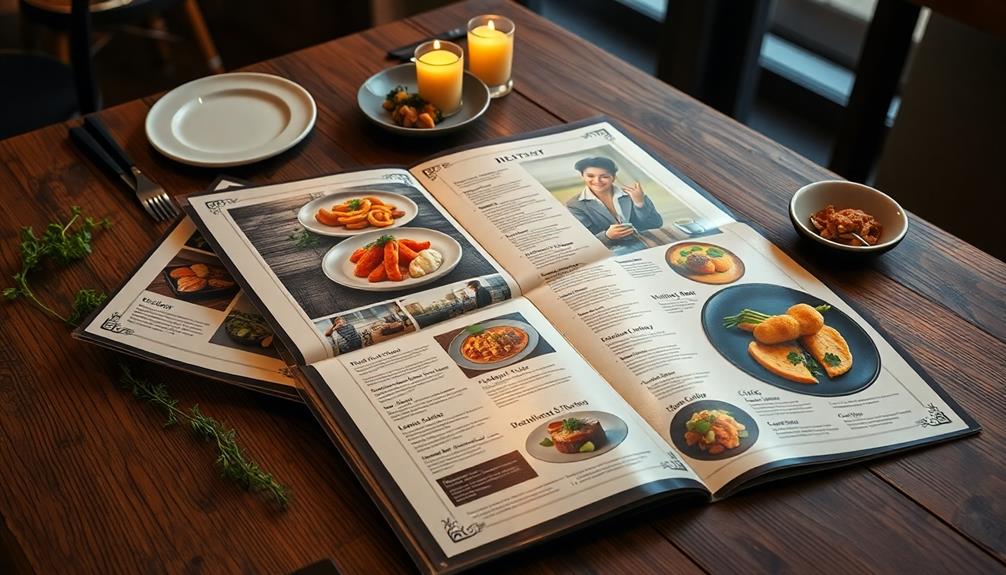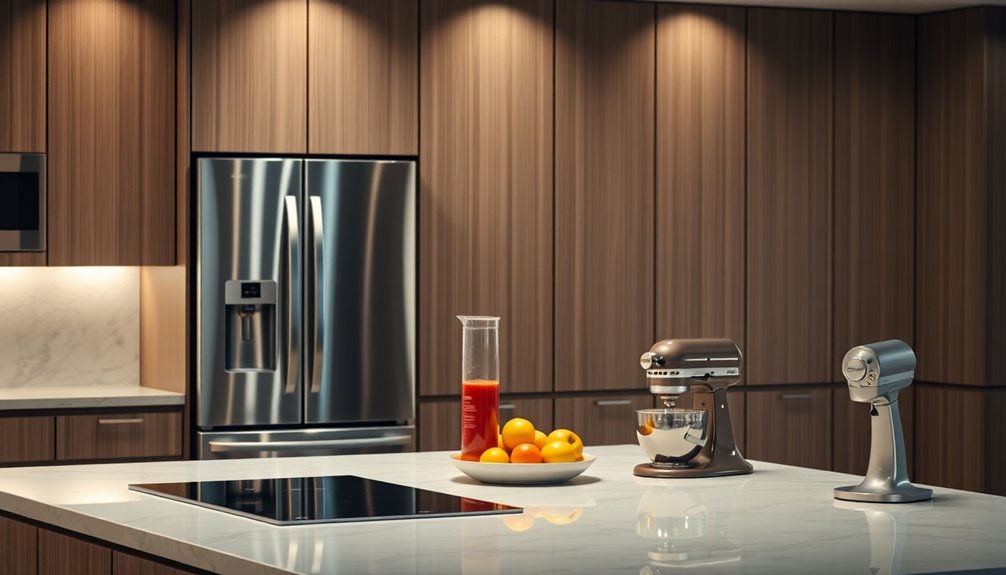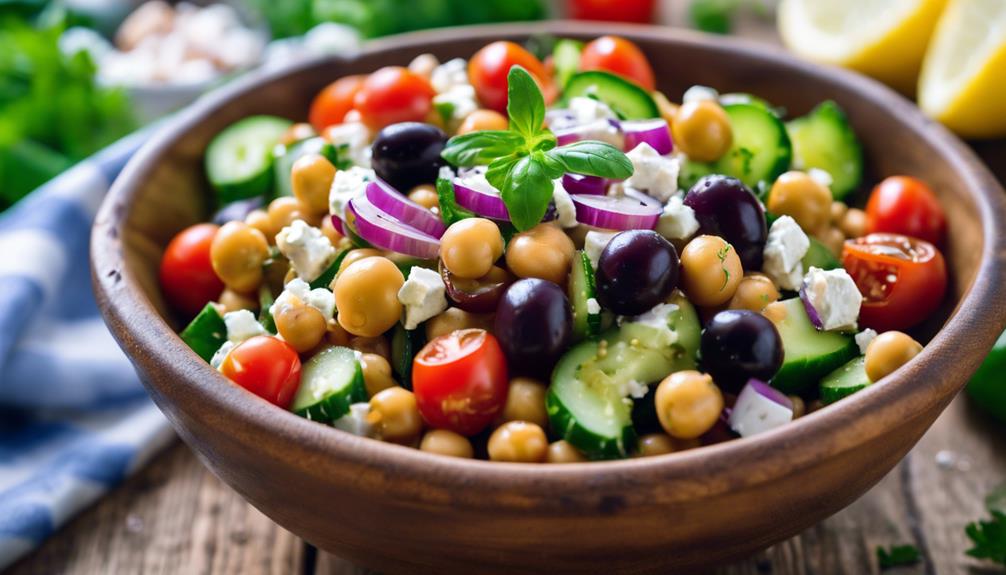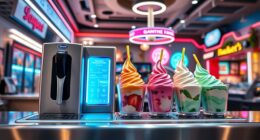The psychology of menu design plays a vital role in influencing your dining decisions. Color choices can evoke specific feelings; for instance, red and yellow stimulate appetite, while green suggests healthiness. Layout strategies like the golden triangle guarantee high-margin items catch your eye first. Descriptive language can enhance the appeal of dishes, drawing you to the options that sound most enticing. Even pricing strategies, like omitting dollar signs, shift your focus from cost to value. By understanding these elements, you can better navigate menus and discover what appeals to you most. There's much more to explore beyond these fundamentals.
Key Takeaways
- Color psychology influences diners' emotions and decisions, with specific colors promoting freshness, appetite, and action for different dishes.
- Strategic menu layouts, like the Golden Triangle and Z-Pattern, enhance visibility and guide customers' selections toward high-margin items.
- Descriptive language, using enticing adjectives and narrative techniques, elevates the perceived value of dishes and fosters emotional connections.
- Pricing strategies, such as omitting dollar signs and using odd pricing, can reduce price sensitivity and encourage higher spending.
- Cultural considerations, including local ingredients and dining customs, enhance authenticity and customer satisfaction in menu design.
Color Psychology in Menus
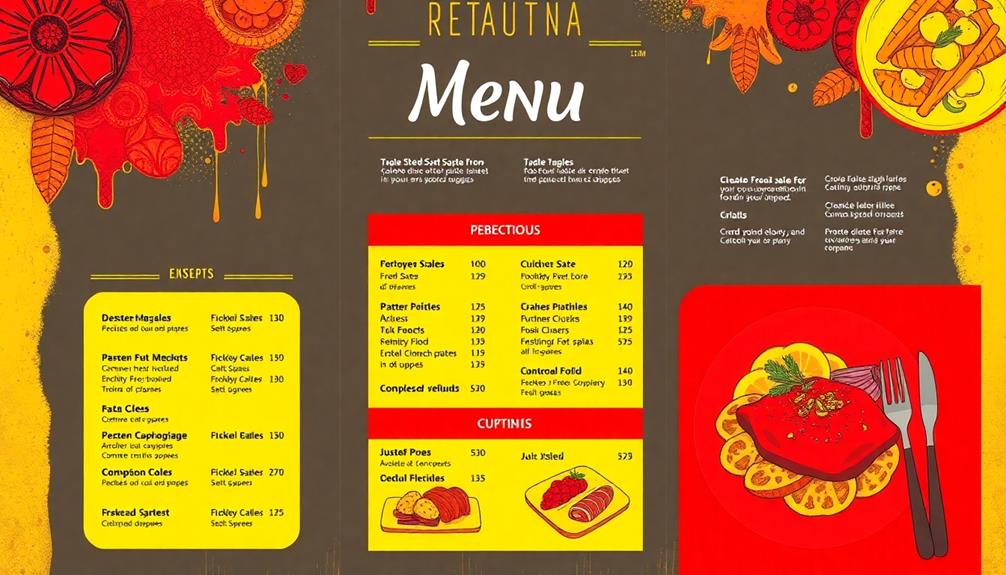
Understanding the impact of color psychology in menus can greatly enhance your dining experience. By carefully choosing colors in menu design, you can influence your appetite and ordering behavior.
For instance, green evokes freshness and health, making it perfect for highlighting salads or organic dishes. Incorporating vibrant greens can also draw attention to healthier options, such as a Candy Corn Fruit Parfaits, prompting you to reflect on their nutritional value. When you see these vibrant greens, you're more likely to perceive their value as higher, prompting you to contemplate healthier options.
Orange is another powerful color that stimulates your appetite. Restaurants often use it to promote healthy food choices, effectively boosting customer engagement.
Meanwhile, yellow captures your attention and evokes feelings of happiness, which can draw you to featured dishes or specials.
Red is particularly effective for encouraging action. It can highlight high-margin items, making them stand out and prompting quicker decisions.
The psychological impact of these colors can considerably influence not just what you feel like eating but also what you end up ordering. By understanding color psychology, you can appreciate how your dining experience is crafted to enhance enjoyment and satisfaction, making your meal more memorable.
Strategic Menu Layout
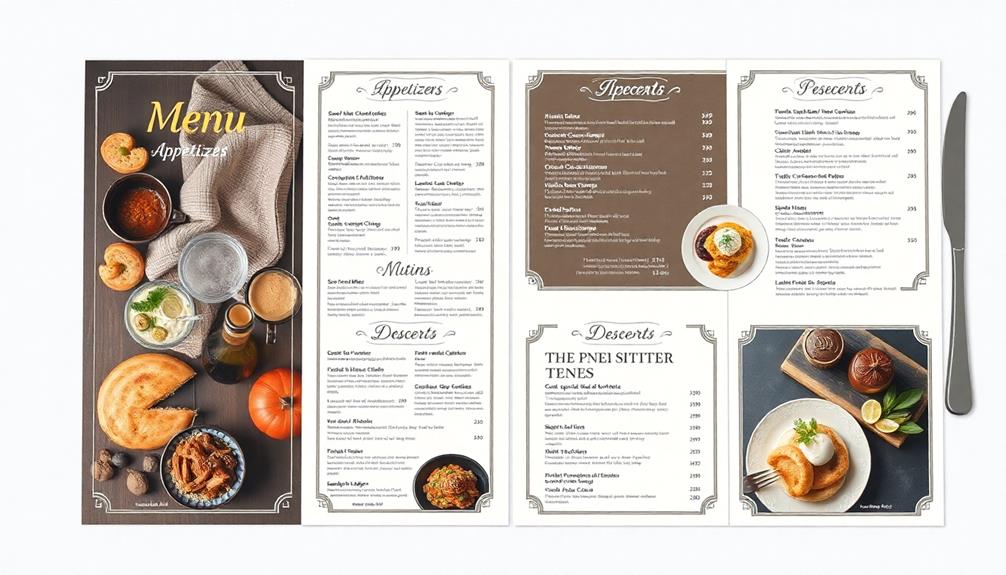
When designing a menu, strategic layout plays an essential role in guiding customer choices and boosting sales. You'll want to utilize the Golden Triangle strategy, placing high-profit margin items in the top left, top right, and center of your menu. These areas naturally attract customer attention, which can lead to increased sales of those items.
Including popular dishes like Red-Braised Pork Belly can further entice diners and highlight cultural significance.
Using a Z-pattern layout helps guide the eye across the menu, making it easier for diners to locate and choose dishes quickly. Grouping similar items together creates coherence, enhancing navigation and overall customer experience.
Organizing your menu with controlled spacing and adequate whitespace prevents overwhelming customers, allowing them to focus on those high-margin dishes you want to promote.
Research shows that customers typically order from the top two or bottom two items in each section. This emphasizes the significance of strategic placement for maximizing sales.
Descriptive Language Techniques
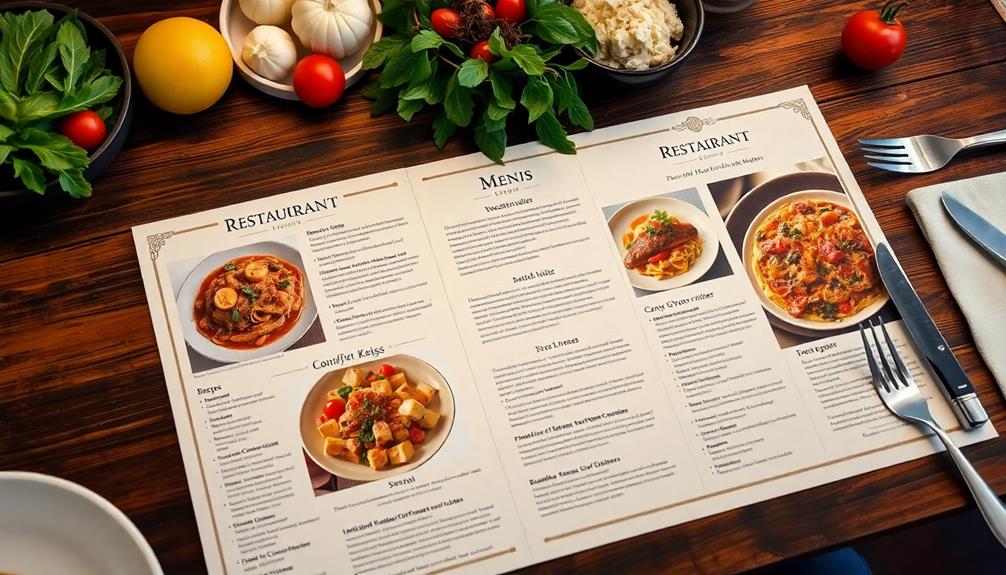
Engaging your diners with descriptive language techniques can transform a simple menu into an enticing experience. By using enticing adjectives like "succulent" or "hand-crafted," you greatly boost the perceived value of your dishes.
For instance, highlighting dishes with regional influences, such as traditional Brazilian dishes, can create a sense of authenticity and adventure for your diners. Think about how a well-crafted menu description can make a dish feel special and worth trying.
Incorporating narrative techniques can deepen emotional connections; for example, referring to a dish as "Aunt Mabel's Fried Chicken" evokes nostalgia and draws diners in. When you emphasize ingredient quality—terms like "freshly-picked" or "locally-sourced"—it enhances the appeal and freshness of your menu items.
Avoid superlative claims; they can often be dismissed and may undermine your credibility. Instead, focus on longer descriptions for high-margin items. Research shows these attract more attention, making dishes feel more unique and valuable, which leads to increased sales.
Ultimately, your menu descriptions play an essential role in guiding diners' choices. By thoughtfully employing descriptive language, you'll create a memorable dining experience that highlights the quality and uniqueness of your offerings.
Pricing Strategies for Profit

Effective pricing strategies can greatly impact your restaurant's profitability. By applying smart menu engineering techniques, you can enhance profit margins while boosting customer spending. For instance, omitting dollar signs from your menu can reduce price sensitivity, encouraging diners to focus on the delicious dish descriptions instead of costs.
| Strategy | Description | Impact on Spending |
|---|---|---|
| High-Priced Items | Positioning these items creates an anchoring effect, making others seem more reasonable. | Increases likelihood of ordering lower-priced items. |
| Decoy Dishes | Offer items priced to make other dishes look like better value. | Steers customers toward higher-margin selections. |
| Odd Pricing | Use prices like $9.95 instead of $10 to seem more attractive. | Increases perceived value and enhances spending. |
Additionally, spelling out prices as "ten dollars" can elevate perceived value and has been shown to increase spending by up to 30%. By strategically organizing your menu sections and utilizing these pricing strategies, you can greatly improve your restaurant's profitability while enhancing the overall dining experience.
Cultural Considerations in Design

Cultural considerations play an essential role in menu design, as they directly influence how well your offerings resonate with diners. Understanding local dining customs and preferences is vital; it enhances customer satisfaction and improves their overall experience.
By incorporating local ingredients into your menu items, such as traditional Mexican dishes, you not only boost authenticity but also cater to customers' desires for regional cuisine.
Additionally, the language and terminology you use should align with cultural expectations. Familiar terms foster a sense of comfort and connection, making meal descriptions more appealing.
Consider cultural dining habits like communal eating or specific meal structures; these elements should inform your menu layout to create a seamless dining experience.
Moreover, adapting your menu design to reflect cultural values and aesthetics can greatly impact customer choices. It helps establish a strong brand identity within the community, making your restaurant more relatable and inviting.
In the psychology of menu design, recognizing these cultural nuances guarantees that each item you offer resonates deeply with your target audience, ultimately driving customer loyalty and satisfaction.
Frequently Asked Questions
What Is Menu Psychology Based On?
Menu psychology's based on understanding how layout, language, and design affect your choices. It focuses on how visual elements and wording can influence what you order, encouraging you to spend more at restaurants.
What Are the Colors of the Menu Psychology?
Colors create compelling connections. Green grabs your gaze for greens and healthy choices, orange opens your appetite, yellow yields joy, and red radiates urgency, pushing you to pick high-margin dishes. Each hue heightens your dining delight.
What Is the Golden Triangle in Menu Design?
The Golden Triangle refers to the prime visual areas on a menu where your eyes naturally focus first. Placing enticing dishes in these spots boosts their visibility and increases the chances you'll order them.
Where Do People Look First on a Menu?
You'd think menus are magic portals, but they're not. People usually start eyeing the middle, then dart to the top right, and finally check out the top left. It's a culinary scavenger hunt!
Conclusion
In the world of menu design, every detail counts. By harnessing color psychology, strategic layouts, and enticing language, you create a feast for the eyes that draws diners in like moths to a flame. Pricing strategies and cultural insights further strengthen your menu's appeal, ensuring it resonates with your audience. So, as you craft your menu, remember: it's not just a list of dishes; it's a carefully curated experience that can turn a meal into a memorable journey.
